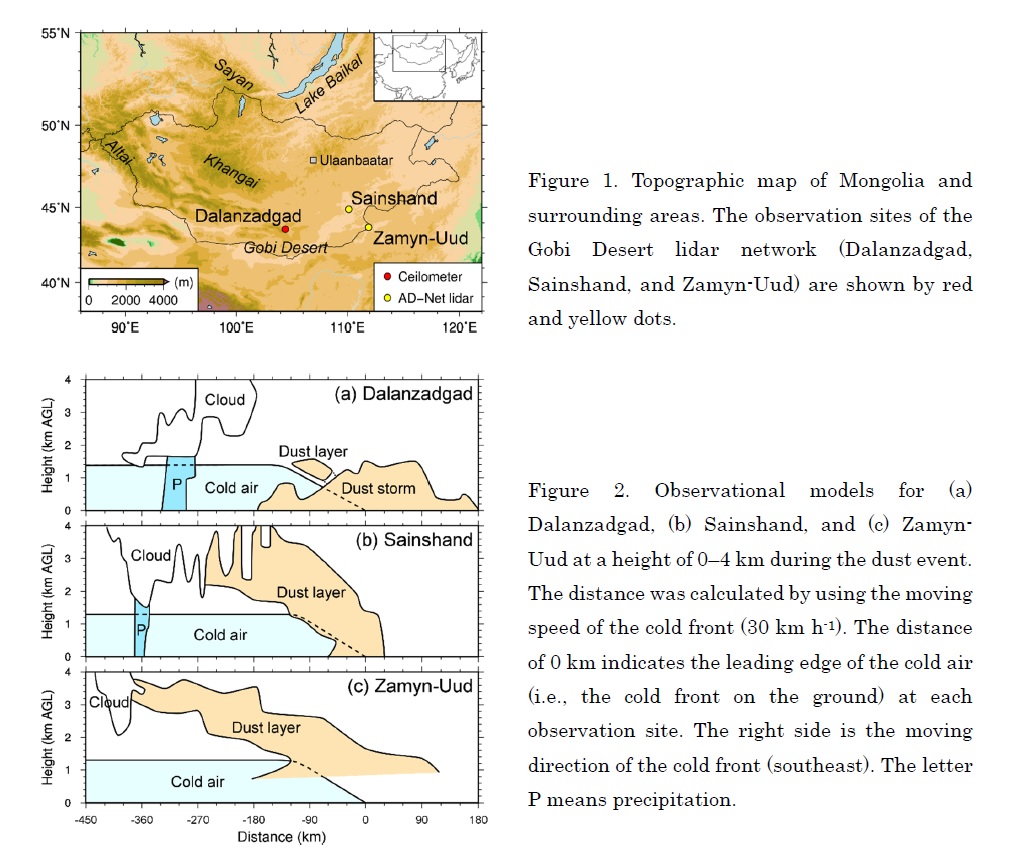Graphical Abstract
Kawai, K., K. Kai, Y. Jin, N. Sugimoto, and D. Batdorj, 2018: Lidar network observation of dust layer development over the Gobi Desert in association with a cold frontal system on 22–23 May 2013. J. Meteor. Soc. Japan, 96, 255-268.
https://doi.org/10.2151/jmsj.2018-023
Graphical Abstract with highlights
Highlights:
- The Gobi Desert is one of the major sources of Asian dust. In this desert, three ground-based lidars are operated in Dalanzadgad, Sainshand, and Zamyn-Uud, Mongolia (Fig. 1). This study firstly combined these lidars into a lidar network and shows the spatial development of a dust layer over the desert and the long-range transport of the dust during 22–23 May 2013.
- While the dust layer was moving across the desert with the cold frontal system, it was developing up to the free troposphere (Fig. 2). The mechanism of this development can be explained by the combination of two processes as follows: (1) the continuous emission of dust from the desert surface to the ABL by the strong wind around the cold front and (2) the continuous transport of the dust from the ABL to the free troposphere by the updraft of the warm air in the cold frontal system.







